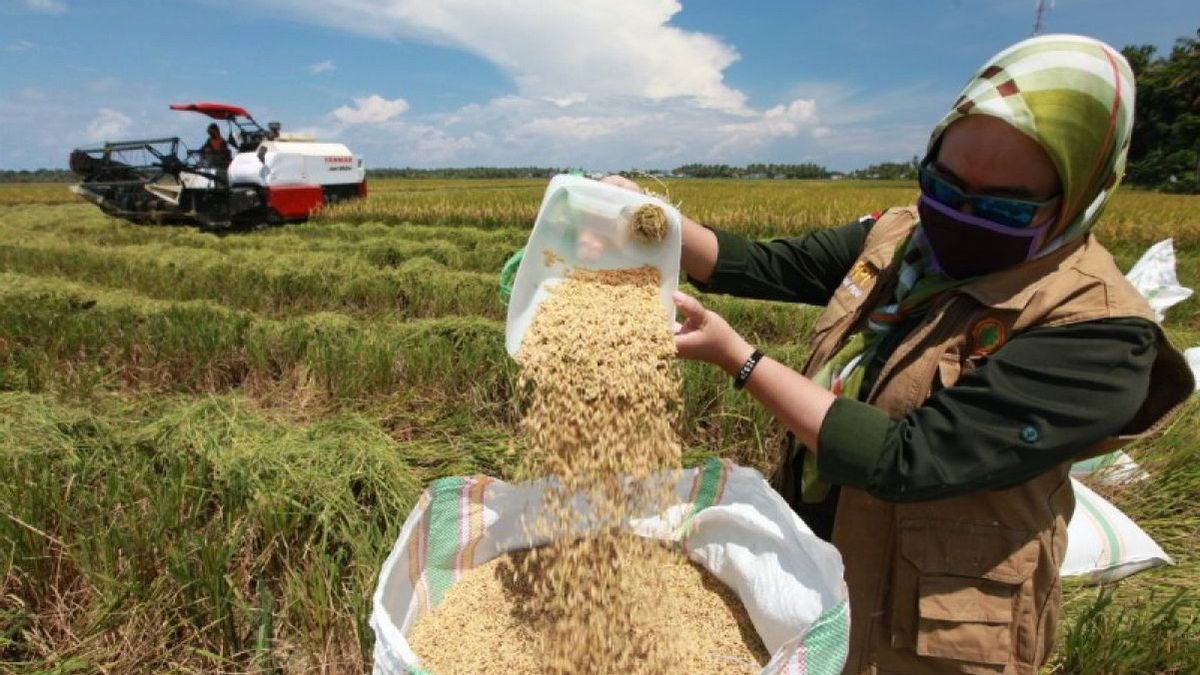JAKARTA - The El Nino phenomenon that triggers drought must be anticipated as early as possible so as not to have a significant impact on food and nutrition security.
Agricultural observer Khudori assessed that El Nino's impact on food production could not be estimated with certainty.
The reason is, based on information released by BMKG, the scale is still relatively low to moderate.
"Referring to El Nino before, the heaviest was the 1997-1998 period. The closest one, yes, 2015 and 2018, but in the last two years it has not had too big an impact," he said when contacted by VOI, Thursday, August 3.
Khudori said, referring to the long data that had been mapped, there was a potential for a decrease in production of 3-5 percent, especially rice which did require a lot of water.
So the direct impact of the direct El Nino phenomenon is the reduced water for agricultural cultivation.
"Hopefully the highest scale is only moderate and the impact is not so big," he said.
He did not deny that the direct impact of El Nino was so detrimental to La Nina.
This is because El Nino also allows the addition of planting or harvesting area in swampy lands and ups and downs.
However, he said, in general the increase was smaller than the decrease in the harvest area due to drought.
Therefore, Khudori emphasized, it is important for related ministries/agencies to carry out mitigation and anticipation.
According to him, frequent structural steps, such as irrigation repairs, reservoirs, dams and waterways.
"Also pumping, deep wells, pantek wells, archesis wells, and others, which allow the provision of water for agricultural cultivation when El Nino occurs," he said.
There are also other steps that can be taken, including cultivating plants according to water availability, water-saving farming practices, such as irrigation, legowo ranks, and so on.
Then, diversify plants to minimize risks, plan plant patterns according to climate and weather, as well as agricultural insurance. This means that if you fail to harvest, farmers will get compensation.
"The anticipated and mitigation that is planned is only certain to be executed in the field and farmers can really be prepared to anticipate it. If all of that is done, the impact should not be too big," he concluded.
For your information, BMKG predicts Indonesia will face the peak of the dry season from August to early September.
This condition is predicted to be much drier than in 2020, 2021, and 2022.
اقرأ أيضا:
If usually the rainfall ranges from 20 mm per day, this dry season the figure becomes once a month or even no rain at all.
BMKG also said that the phenomenon of El Nino and the phenomenon of sea level temperature deviation in the Indian Ocean caused changes in atmospheric movement or called the Positive Ocean Dipole (IOD) that occurred made this year's dry season more dry and rainfall in the category to very low.
The English, Chinese, Japanese, Arabic, and French versions are automatically generated by the AI. So there may still be inaccuracies in translating, please always see Indonesian as our main language. (system supported by DigitalSiber.id)
















